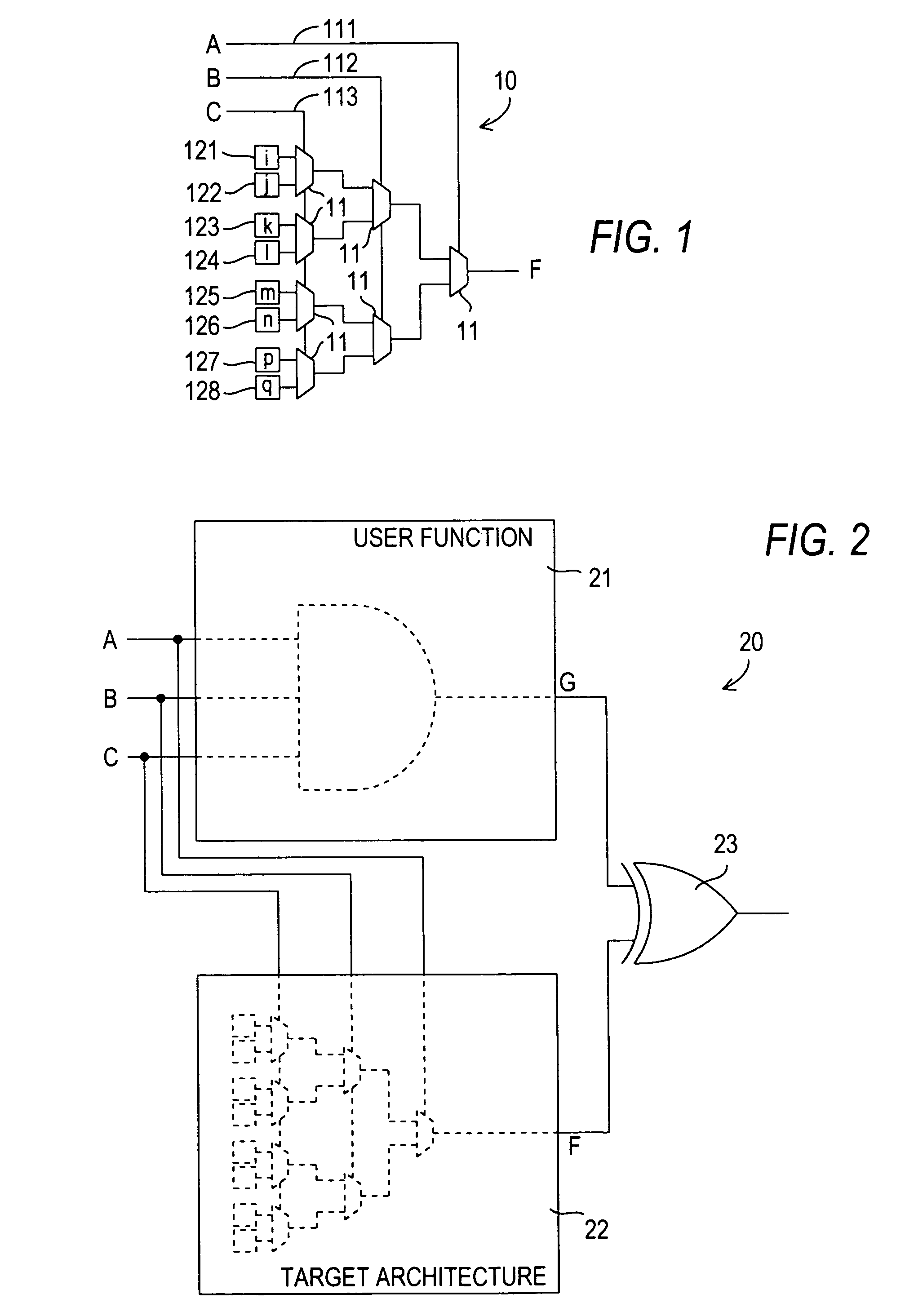Technology mapping for programming and design of a programmable logic device by equating logic expressions
a technology of logic and programming, applied in the direction of cad circuit design, program control, instruments, etc., can solve the problems of not finding the best, the fastest or most efficient, and the inability to program or design the logic without such software, so as to achieve the effect of more efficien
- Summary
- Abstract
- Description
- Claims
- Application Information
AI Technical Summary
Benefits of technology
Problems solved by technology
Method used
Image
Examples
Embodiment Construction
[0027]The invention will now be described with reference to FIGS. 1-7.
[0028]PLDs of the type with which the present invention may be used are typically based on look-up-table-type logic LEs. For example, LEs in PLDs from Altera Corporation, of San Jose, Calif., typically are based on 4-input look-up tables (4-input “LUTs” or “4-LUTs”). However, for purposes of illustration, it is less cumbersome to consider a 3-input look-up table (“3-LUT”), which may be represented logically by half the number of components as compared to a 4-LUT.
[0029]FIG. 1 shows an LE 10 as a 3-LUT represented logically as a logic cone or tree of seven 2:1 multiplexers 11, with the multiplexer control inputs being the look-up table inputs A (111), B (112), C (113), and the multiplexer data inputs being the PLD configuration bits i, j, k, l, m, n, p, q 121-128. The “vector” of values of configuration bits 121-128 is sometimes referred to as the “LUTmask” of the LUT or LE.
[0030]The truth table for LE 10, in terms ...
PUM
 Login to View More
Login to View More Abstract
Description
Claims
Application Information
 Login to View More
Login to View More - R&D
- Intellectual Property
- Life Sciences
- Materials
- Tech Scout
- Unparalleled Data Quality
- Higher Quality Content
- 60% Fewer Hallucinations
Browse by: Latest US Patents, China's latest patents, Technical Efficacy Thesaurus, Application Domain, Technology Topic, Popular Technical Reports.
© 2025 PatSnap. All rights reserved.Legal|Privacy policy|Modern Slavery Act Transparency Statement|Sitemap|About US| Contact US: help@patsnap.com



